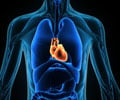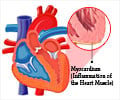Scientists at the University of Maryland School of Medicine (UM SOM) and the Ottawa Heart Institute have uncovered a new pathway by which the brain uses an unusual steroid to control blood pressure

For decades, researchers have known that the brain controls the diameter of the peripheral arteries via the nervous system. Electrical impulses from the brain travel to the arteries via a network of nerves known as the sympathetic nervous system. This system is essential for daily life, but is often chronically overactive in high blood pressure and heart failure. In fact, many drugs that help with hypertension and heart failure work by decreasing both acute and chronic activity in the sympathetic nervous system. However, these drugs often have serious side effects, such as fatigue, dizziness and erectile dysfunction. "These drawbacks have led to the search for novel ways to inhibit the sympathetic nervous system while causing fewer problems for hypertension and heart failure patients," says Dr. Frans Leenen, director of hypertension at the Ottawa Heart Institute, and a principal author of the study.
Working with an animal model of hypertension, Dr. Hamlyn and Dr. Mordecai Blaustein, professor of physiology and medicine at the UM SOM, and their research partner, Dr. Leenen, found a new link between the brain and increased blood pressure, namely, a little-known steroid called ouabain (pronounced WAH-bane). Ouabain was discovered in human blood more than 20 years ago by Dr. Hamlyn and Dr. Blaustein, along with scientists at the Upjohn Company. The new study is the first to identify the particular pathway that connects the brain to ouabain's effects on proteins that regulate arterial calcium and contraction. Through this mechanism, ouabain makes arteries more sensitive to sympathetic stimulation, and as a result the enhanced artery constriction promotes chronic hypertension."Now that we understand the role of ouabain, we can begin working on how to modify this new pathway to help people with cardiovascular problems," said Dr. Blaustein. "The potential for this is big." Dr. Blaustein, who has been doing research on the substance since 1977, said medications that block ouabain's effects might improve the lives of people with hypertension and heart failure.The researchers, who include Vera Golovina, Ph.D., an adjunct associate professor of physiology at UM SOM, and Bing Huang, M.D, Ph.D., a research associate at the Ottawa Heart Institute, also found significant new evidence that ouabain is manufactured by mammals, a question that had not been previously answered.
"This discovery underscores the crucial importance of basic research here at the School of Medicine," said Dean E. Albert Reece, MD, PhD, MBA, as well as vice president of medical affairs, the University of Maryland and the John Z. and Akiko Bowers Distinguished Professor. "These scientists have spent years unraveling the many potential roles of ouabain and how it works, and now we are beginning to see the fruits of their labor."
Source-Eurekalert















